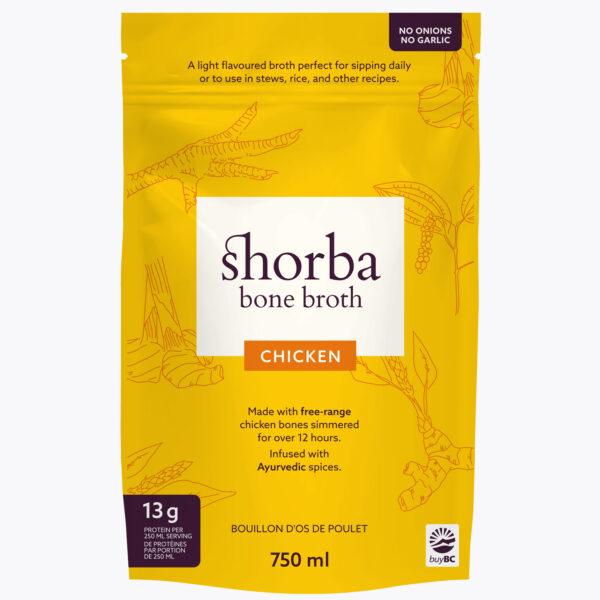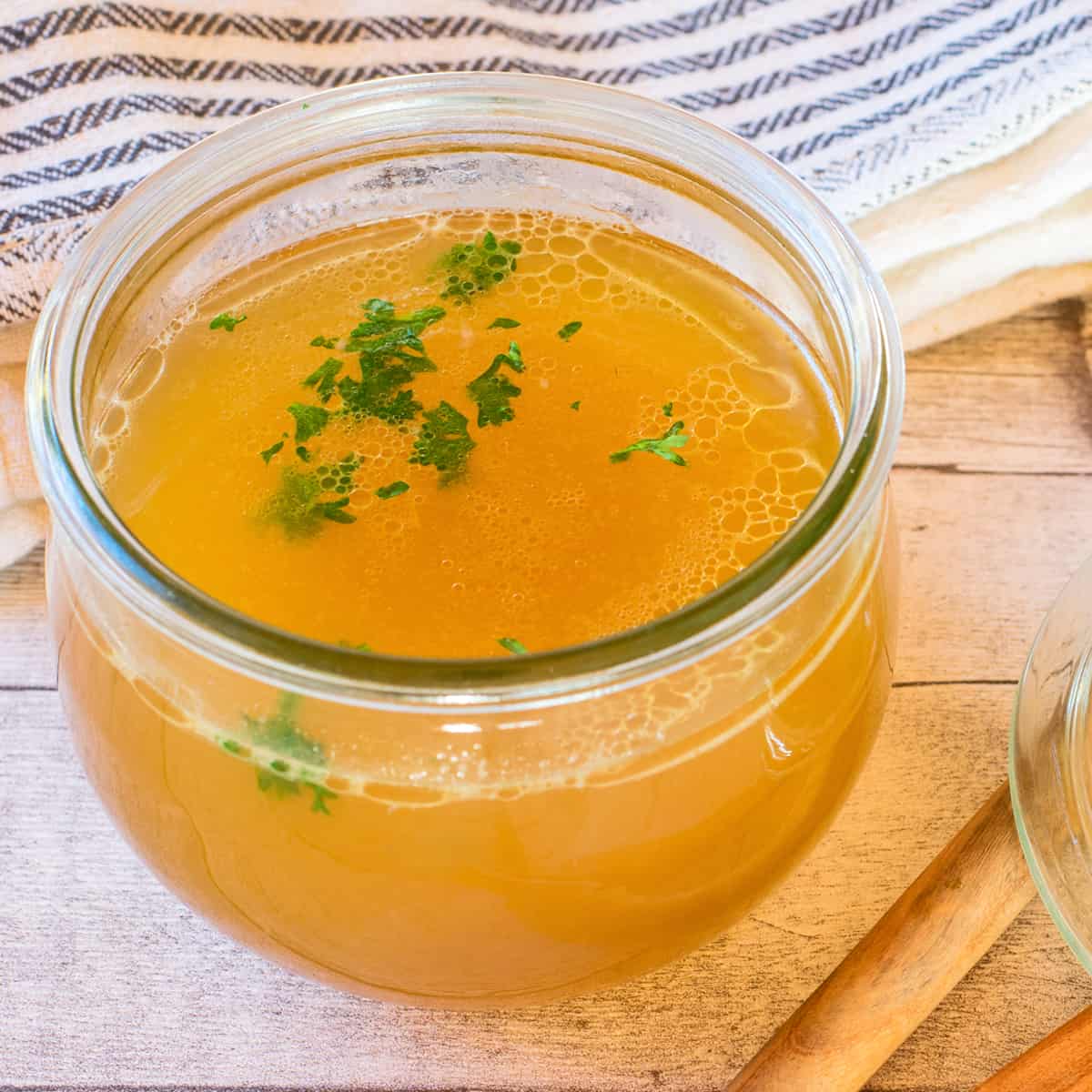The Ultimate Overview to Making and Enjoying Organic Bone Broths at Home
Bone brew has actually acquired interest for its countless health advantages and cooking adaptability. Crafting natural bone brew in your home allows individuals to manage the top quality of components, making sure a nourishing result. Comprehending the option of bones, necessary flavor elements, and appropriate cooking techniques is essential. As the process unfolds, one might wonder exactly how to raise their broth past the basics and incorporate it into daily dishes for improved flavor and nourishment.
Comprehending the Wellness Perks of Bone Broth
Bone brew has actually been a staple in different cuisines for centuries, its wellness benefits have acquired significant focus in recent years. Rich in collagen, amino acids, and minerals, bone brew is typically touted for its possible to sustain joint health, improve intestine function, and enhance skin flexibility. The gelatin obtained from prepared bones might help food digestion and assistance secure the digestive tract cellular lining, potentially relieving concerns like leaky gut syndrome.Furthermore, the presence of nutrients such as glucosamine and chondroitin may add to decreased swelling and discomfort alleviation in joints. Additionally, bone brew is moisturizing and can function as a healthy base for soups and stews. Many advocates also assert that it improves the immune system, many thanks to its mineral account. Overall, the renewal of passion in bone broth is connected to its viewed capability to advertise general well-being and support different physical features.
Choosing the Right Bones for Optimum Flavor and Nutrition
What factors should one consider when picking bones for broth prep work? The sort of bones made use of considerably affects both flavor and dietary worth. It is important to select bones that include a mix of marrow bones, joint bones, and weighty bones. Marrow bones provide abundant tastes and healthy and balanced fats, while joint bones add collagen, enhancing the broth's nutritional profile.Additionally, sourcing bones from grass-fed or pasture-raised pets guarantees better and more nutrients, as these pets are usually healthier. The quality of the bones is likewise important; selecting bones from local butchers or farmers' markets can guarantee excellent taste. Bone dimension matters too; larger bones release more gelatin, leading to a richer brew. Ultimately, thinking about the type of animal-- beef, chicken, or fish-- can affect the final taste, permitting functional brew choices customized to specific preferences.
Necessary Ingredients for a Flavorful Bone Broth

Quality Bone Choice
The structure of a savory bone broth depends on the cautious selection of high-grade bones. Sourcing natural, grass-fed or pasture-raised bones is crucial, as these choices are most likely to be devoid of unsafe additives and offer premium nutrients. Selections such as beef, hen, or lamb bones each give distinctive tastes and wellness advantages. Bone kinds, consisting of marrow bones, knuckle bones, and oxtails, contribute gelatin and collagen, boosting the broth's structure. Choosing bones with a mix of meat and connective cells can additionally add richness and deepness. Furthermore, picking bones with noticeable marrow assures a nutrient-dense brew, raising the total top quality. Eventually, investing time in quality bone choice prepares for a beneficial and delicious brew.
Aromatic Flavor Enhancers
Selecting high-quality bones sets the phase for a nutritious and rich bone broth, yet it is the enhancement of fragrant taste boosters that truly raises the dish. Active ingredients such as onions, garlic, and carrots not only pass on sweetness yet also add depth to the broth. Fresh herbs like thyme, bay, and parsley leaves include an aromatic note, while flavors such as black peppercorns and cloves introduce warmth and intricacy. Furthermore, integrating a splash of apple cider vinegar can assist essence minerals from the bones, improving the broth. These flavor boosters create an unified blend, changing a straightforward broth into a savory foundation for soups, sauces, or stews, making it a flexible component in any type of culinary arsenal.
Step-by-Step Guide to Making Bone Broth at Home
Creating bone broth at home can be a satisfying cooking venture that improves both taste and nourishment in various dishes. To begin, one have to select high-grade bones, preferably from grass-fed or natural sources. Toasting the bones at 400 ° F for concerning thirty minutes can intensify the taste. Next off, move the roasted bones to a big pot or sluggish stove and cover them with cold water. Adding a splash of vinegar helps extract minerals from the bones.Include fragrant veggies like onions, carrots, and celery for added depth, together with natural herbs and spices as wanted. Bring the mixture to a boil, then minimize to a simmer. It is necessary to let the broth simmer for a minimum of 12 hours, however longer is more suitable for optimum richness. Lastly, pressure the broth through a fine-mesh screen and store it in airtight containers, prepared to elevate meals with its nutritious essence.

Tips for Perfecting Your Bone Brew Simmer
While simmering bone broth, keeping the right temperature level and timing is vital for attaining a rich and delicious result. A gentle simmer, preferably between 190 ° F and 210 ° F, assists remove maximum nutrients and tastes without boiling, which can make the broth cloudy. It is recommended to monitor the pot carefully, changing the heat as essential to preserve this simmer.Timing is also crucial; a longer simmer, commonly varying from 12 to 48 hours, permits much deeper flavor extraction and collagen launch. For chicken bones, a 12 to 24-hour simmer is sufficient, while beef bones take advantage of longer cooking times.Additionally, skimming any type of foam or contaminations that rise to the surface during the very first few hours can improve the broth's clarity and taste. Making sure the pot is covered throughout simmering helps to retain dampness and magnify the flavors, making for an extra enjoyable end product.
Imaginative Ways to Use Bone Broth in Your Cooking
Integrating bone broth into numerous meals boosts both flavor and nutritional value. Chefs and home cooks alike find that using bone brew as a base for stews and soups enhances deepness and richness, transforming simple dishes right into hearty meals. It can additionally be employed in risottos, where the brew replaces water, allowing the grains to absorb its savory essence.Additionally, bone broth functions as an exceptional food preparation fluid for grains like quinoa or rice, infusing them with nutrients and flavor. For an included twist, it can be used in braising meats, causing tender, savory end results. Even sauces take advantage of a sprinkle of bone brew, enriching their preference profile.Moreover, bone brew can be integrated into shakes for an unforeseen health increase, offering healthy protein and nutrients without jeopardizing preference. These innovative resource applications showcase the adaptability of bone brew in daily cooking, making it an invaluable kitchen area staple.
Storing and Maintaining Your Homemade Bone Brew
Proper storage and conservation of homemade bone broth is vital for preserving its taste and nutritional benefits. Cold methods and refrigeration best methods play an important role in extending the brew's life span. Understanding these techniques can help guarantee that the broth continues to be secure and delicious for future usage.

Freezing Techniques Explained
Cold methods are important for successfully keeping and maintaining home made bone brew, guaranteeing its abundant tastes and nutrients continue to be undamaged for future use. To ice up bone broth, it is a good idea to allow it cool totally prior to moving it to storage space containers. Glass containers, silicone molds, or durable fridge freezer bags appropriate options. When using containers, leave area at the top for growth during freezing. Portioning the brew into smaller amounts enables for very easy thawing and reduces waste. Tag containers with the day and contents for simple identification. For peak high quality, consume the icy brew within three to six months - Bone Broth Delivery. Thawing can be performed in the refrigerator or by utilizing a microwave, making certain that the brew is warmed extensively prior to usage
Refrigeration Best Practices
While numerous concentrate on freezing as an approach of preservation, refrigeration likewise plays a vital function in keeping homemade bone brew properly. Once cooled, bone broth should be moved to airtight containers, guaranteeing marginal air direct exposure to avoid putridity. It is recommended to refrigerate broth within 2 hours of food preparation to keep its top quality. Normally, homemade bone broth can be kept in the refrigerator for as much as five days. Labeling containers with dates can assist track quality. For peak taste and security, broth should be reheated to a moving boil before consumption. If longer storage is required, freezing continues to be an outstanding choice, but proper refrigeration practices assure that bone broth stays nutritious and tasty for temporary use.
Frequently Asked Inquiries
Can I Make Use Of Frozen Bones for Making Bone Broth?
The question of making use of frozen bones for bone brew emerges frequently (Benefits Of Bone Broth). Professionals concur that frozen bones can be utilized properly, yet they need to be thawed prior to food preparation to guarantee suitable flavor and nutrient removal
For How Long Can I Shop Homemade Bone Brew?

Is It Safe to Reheat Bone Broth Multiple Times?
Reheating bone broth multiple times can pose safety and security concerns - Bone Broth Delivery. Each reheating cycle raises the threat of bacterial development. It is advisable to reheat just once and save any kind of leftovers immediately to ensure security and high quality
Can I Include Veggies to the Broth for Taste?
Including vegetables to broth improves flavor and nutritional value. Typical selections consist of carrots, onions, and celery. The vegetables infuse their significance right into the brew, producing a richer and a lot more full-flavored end product.
What's the most effective Means to Defrost Icy Bone Broth?
To thaw frozen bone brew, one can place it in the refrigerator overnight, utilize a microwave on low heat, or immerse look these up the sealed container in cozy water, guaranteeing even thawing without compromising taste or nutrients. It is crucial to select bones that include a mix of marrow bones, joint bones, and weighty bones. Marrow bones provide abundant flavors and healthy and balanced fats, while joint bones contribute collagen, enhancing the brew's dietary profile.Additionally, sourcing bones from grass-fed or pasture-raised animals guarantees higher quality and more nutrients, as these pets are typically much healthier. Bone kinds, consisting of marrow bones, knuckle bones, and oxtails, contribute gelatin and collagen, improving the broth's appearance. Selecting top notch bones sets the phase for a nourishing and abundant bone broth, yet it is the enhancement of fragrant flavor boosters that truly raises the meal. Even sauces profit from a splash of bone brew, enhancing their preference profile.Moreover, bone broth can be incorporated into smoothies for an unforeseen health boost, providing healthy protein and nutrients without compromising preference.